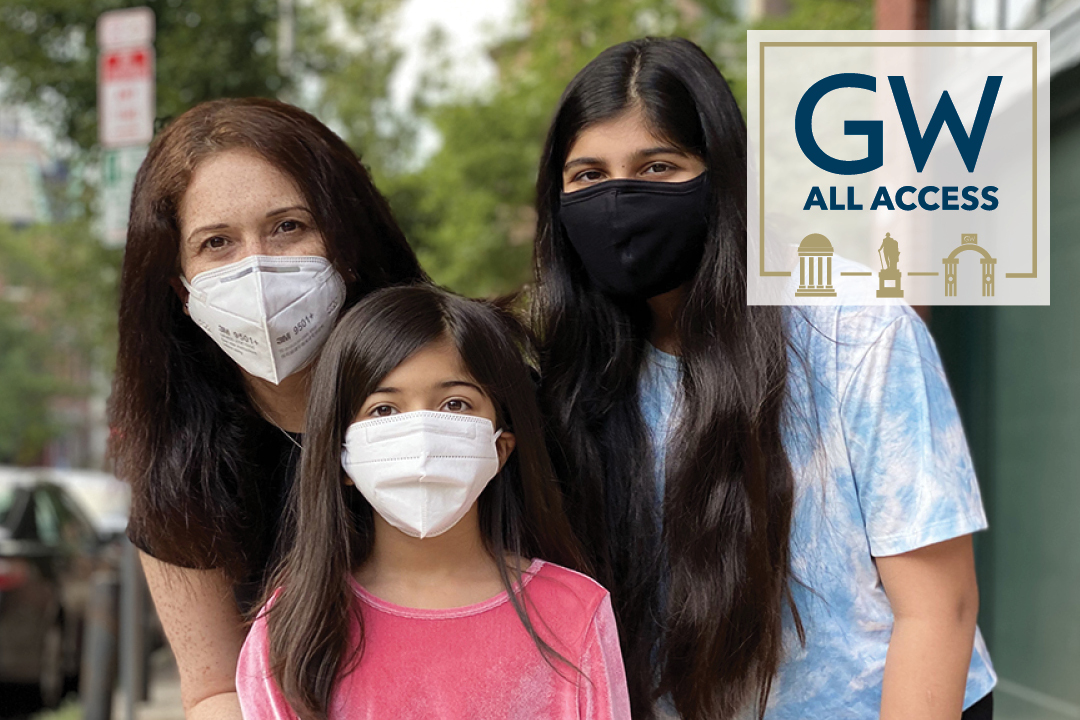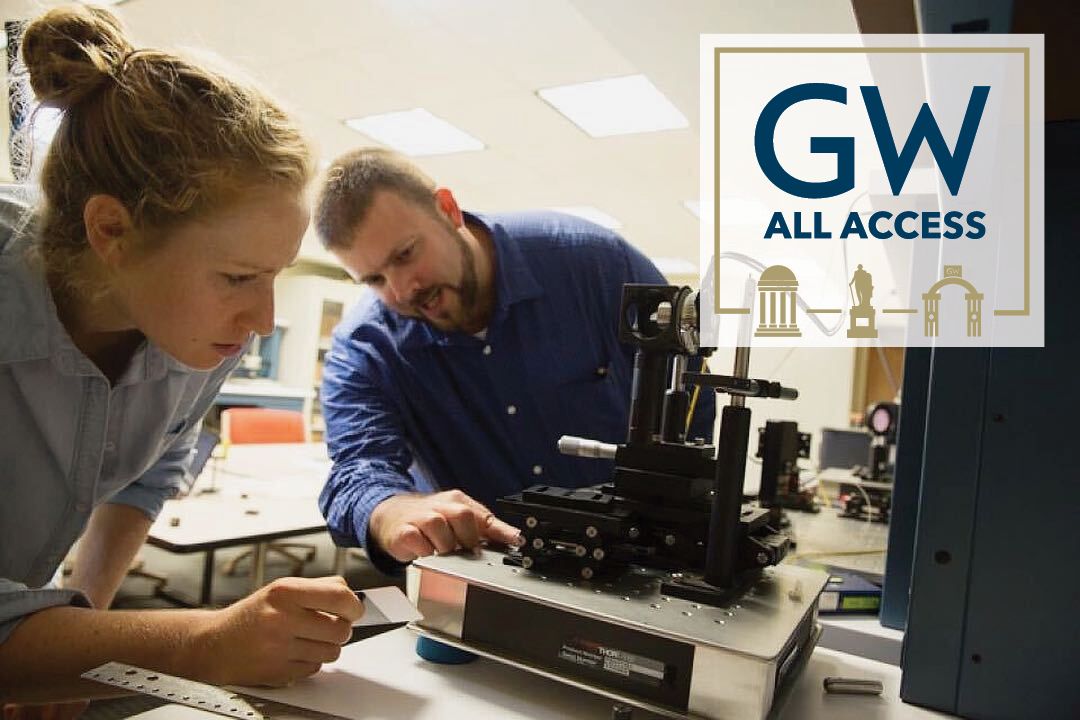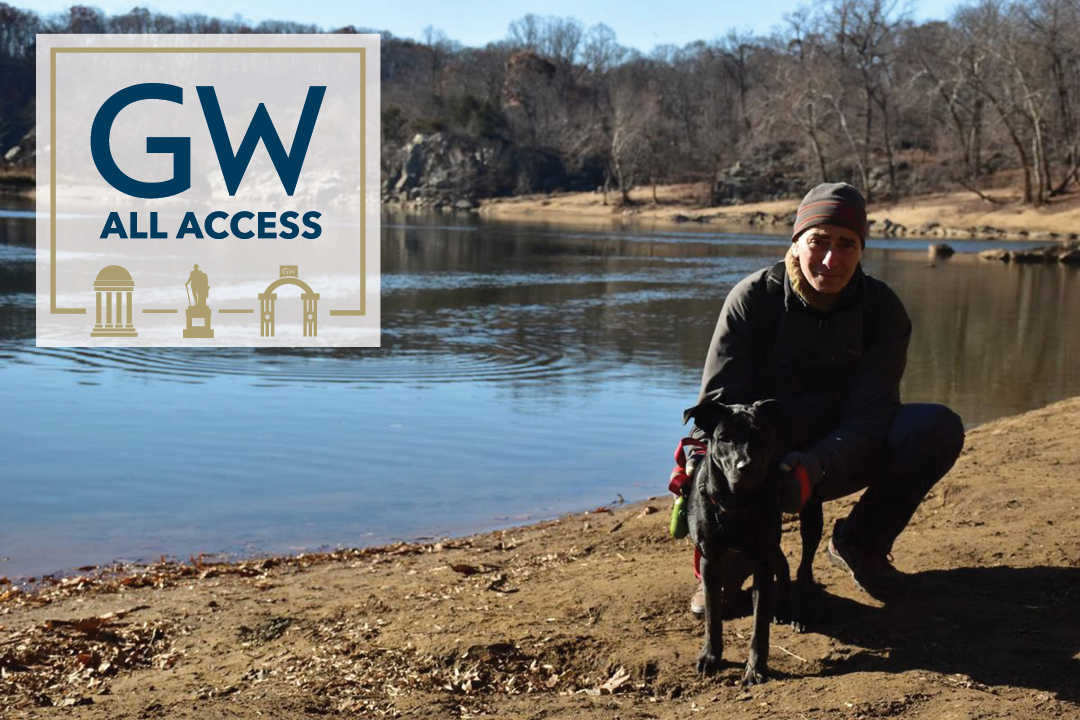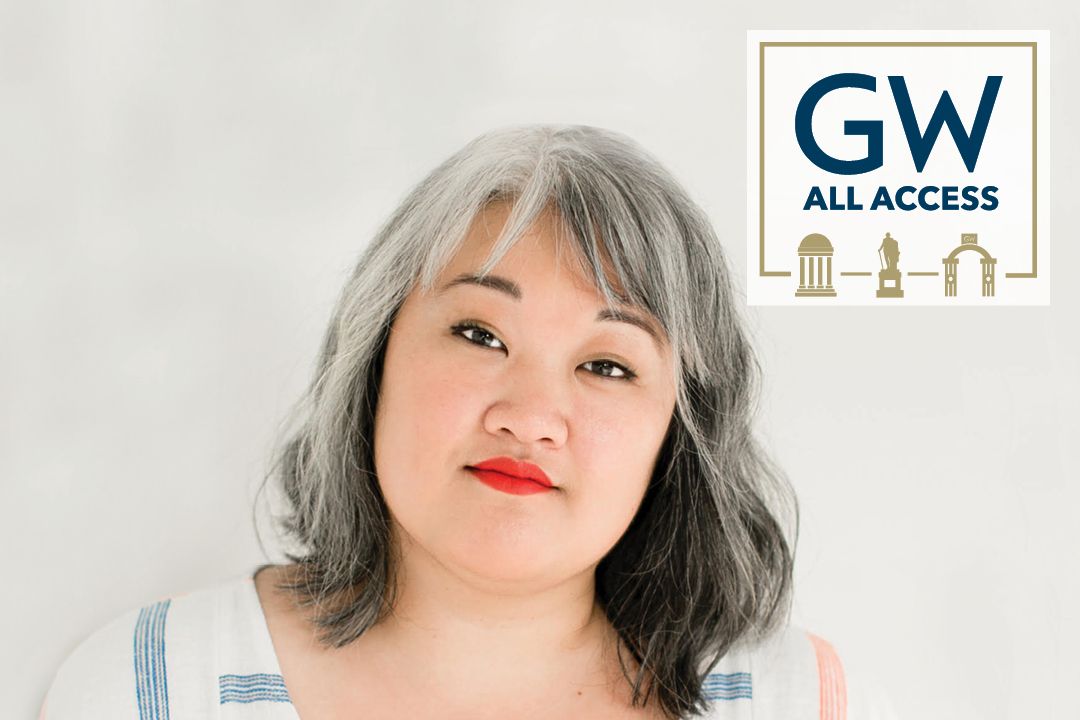A new series from GW Today shows how GW is preparing for the fall semester and a high-quality academic experience.
By Kristen Mitchell
As Professor Kavita Daiya has been thinking through the best ways to reinvent her courses for the fall 2020 semester, she’s kept her eye on the news. For a course that dissects the role media plays in women’s lives, interpreting national conversation about the Black Lives Matter movement is just as important as planning lectures.
Dr. Daiya, associate professor and director of the Women’s, Gender and Sexuality Studies Program, taught “A Study of Women and Media” for the first time in fall 2019. The course takes an intersectional lens to how media representations of gender and identity are impacted by factors like race, sexuality, class, nationality, and religion. Studying the contemporary United States in an international context, the course examines how films, comics, and digital media engage sociopolitical power relations from the standpoint of the present.
“I’m not just transitioning this course online in terms of the medium of instruction,” she said. “I’m also reinventing the course in a way that is being politically responsible and intellectually responsive to the moment we find ourselves in.”
This fall the course will revolve around connecting course topics with conversations on social justice, Black Lives Matter and inequalities brought into focus by the COVID-19 pandemic, in addition to global migration. Students will engage with these topics during synchronous class discussions and by writing op-eds for a class blog. Dr. Daiya recently participated in GW’s FLEX Teaching Camp, which helped guide faculty on how to create active learning experiences in the virtual environment. She said the three-day workshop gave her “a lot of great ideas” on how to navigate the fall.
While planning her course, Dr. Daiya asked currently registered students for feedback about what worked best for them during the spring semester transition to virtual learning. Based on their feedback, she has been focused on preparing pre-recorded lectures students can review multiple times, developing written assignments as opposed to timed work, and ensuring that the shift to virtual learning doesn’t demand a greater out-of-class time commitment than in-person learning would.
“I don't want to overwhelm students,” she said. “The point of being in any course is to be discovering new knowledge, not to be overwhelmed about discovering new knowledge.”
Guest speakers will also play an important role in Dr. Daiya’s virtual classroom. She invited Malaka Gharib, the deputy editor and digital strategist on NPR's global health and development team, to join the class this fall. Ms. Gharib will discuss her graphic narrative “I Was Their American Dream,” and host a workshop to show students how to put together a zine. This will be a novel opportunity for students to engage deeply and creatively with their coursework, Dr. Daiya said.
Dr. Daiya taught the first Department of English course offered as an online summer course nearly a decade ago. While the format isn’t new to her, she recognizes it will be a significant transition for many students. During the semester ahead, she advises students to stay in touch with their professors and ask questions when needed, maintain a planner to stay on top of assignments—even more so than they might during an in-person semester—and to practice self-care.
“Self-care is a central feminist principle,” she said. “Whether it’s taking a dance class online, doing yoga, running, or calling friends every day, stay in touch with passions and people you care about. Do the things that will make you feel good and lift your spirits. Take care of yourself.”
As for herself, Dr. Daiya finds time to exercise through virtual zumba classes with her daughters; already fluent in five languages, she is now learning Spanish using the Duolingo app. She also finds new meaning in cooking.
“It feels really nice after a long day of doing cerebral work to do something with my hands,” she said. “To do something that involves mixing, chopping, putting ingredients together to create food, is very satisfying: the fruit of your labor is right there for you to see and enjoy.”





